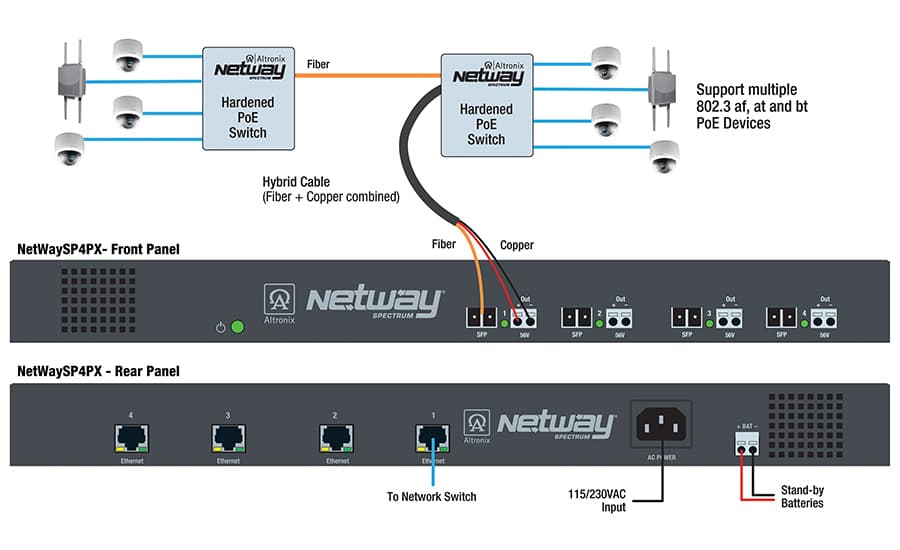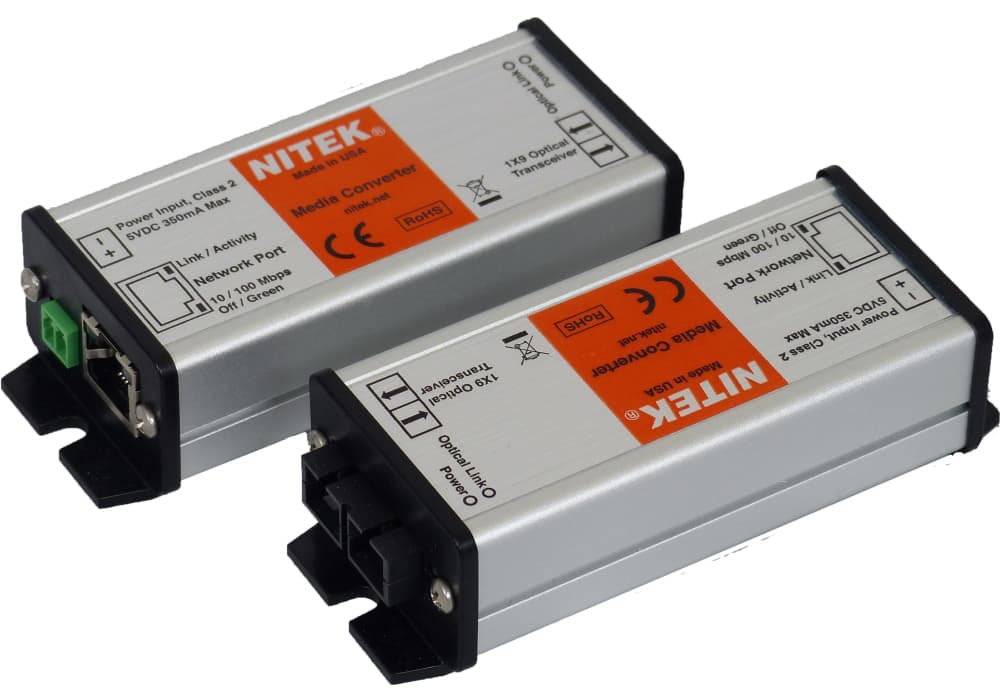// Fiber Optics

Understanding
Fiber Optics
for Video
kynny/iStock / Getty Images Plus via Getty Images
Understanding Fiber Optics for Video
Fiber optics provide superior connections for video transmission, and can be a significant cost saver for dealers who know what they are doing.
By David Engebretson, SDM Contributing Writer
The overall growth of surveillance video has greatly increased in the past few years, as video analytics, megapixel cameras and other innovations are causing more customers to install new or upgrade existing surveillance systems. Using existing or new fiber optic links can provide integrators with great distances from the camera to the headend, huge bandwidth capacities and immunity to RFI and EMI.
These characteristics of fiber optics can make for excellent video transmissions, and there can be great cost savings for those installation companies who can take advantage of the millions of “dark” or unused fiber optic links that already exist in most large building and/or campuses.
Benefits to Using Fiber Optics Technology
The technology used to transmit over fiber optics is very simple to understand. The transmitter is a blinking LED or laser, and the receiver “sees” the blinking light and converts the signals back into an electrical component that can then be connected to standard network switches and IP cameras using UTP copper cables. These devices connected to the fiber and the copper network are called “media converters” or “optoelectronics.”
The distances that Ethernet and other protocols can be transmitted over fiber optic links far outlast what can be done with coax or UTP cables.
Fiber optic strands come in two basic flavors: multimode and singlemode, where a “mode” is a light path. Multimode fiber, which is usually used within buildings and campuses, can provide reliable communications as far as 1.2 miles using inexpensive media converters. If the fiber is of the singlemode variety, the signal can travel more than forty miles before it must be amplified or retransmitted. These distances far exceed the capabilities of Cat5e/6 UTP and coax.
So those camera installations that need to watch a far gate or entrance that is a half mile from the headend can be easily reached with either type of fiber, with multimode providing some cost savings over singlemode if the distance is within the specifications length for the optoelectronics to be used.
Fiber can be used to connect remote cabinets, while local power is used to provide PoE for IP cameras and other devices.
IMAGE COURTESY OF ALTRONIX

There is an added benefit in using fiber optic connections, according to Ronnie Pennington, director of sales for the Americas at Altronix, Brooklyn, N.Y. “Increasingly IP cameras and other security devices are connected to a client’s primary LAN. By using fiber optic connections, the client’s expensive network switches and servers are protected from lightning strikes. While a lightning hit may well take out a camera, the surge cannot reach the customer’s LAN, as there is usually no metal within the cable to carry a charge.”
Pennington adds that there is increased usage and interest in using fiber optics for video and access control connections. He pointed out that while the fiber links can carry the signal, power for cameras and other devices must be provided at the remote location. Altronix has a line of NetWay products that can provide power and connectivity using “composite” cable that typically has two multimode fibers and two 12–18-gauge copper conductors to power remote devices.
Fiber Optics Provide New Video Opportunities
Large facilities, railroads, highways and other remote applications become candidates for surveillance video if connected to fiber optic links.
“There are large opportunities for installation companies to provide fiber optic connected devices for everything from large industries to fiber to the home,” says Ryan Dover, general manager of Nitek, Schaumburg, Ill. Dover isn’t seeing a large uptick in demand for fiber optic media converters, which he attributes to the proliferation of products. Because these devices are normally designed to transmit standardized 10/100/1000 Ethernet, it doesn’t require much engineering for a manufacturer to enter the fiber optic media converter market, driving down prices. While lower costs are generally good for installation companies, integrators should take a close look at the manufacturers of the fiber optic devices they deploy, and verify that even if most of these devices are “plug and play,” there is technical support available if there are problems in the field.
One of the primary movers of fiber optic usage is the proliferation of Small Form Factor Pluggable (SFP) modules. These small modules plug into the open sockets that can be found on a variety of network switches and equipment. System designers can select between multimode or singlemode fiber types that can be connected to SFP modules usually with two LC style fiber connectors.
If AC power is available remotely, an inexpensive network switch can provide up to Gigabit Ethernet and PoE to power IP cameras over standard UTP cables and connections.
Devices like the MM100L from Nitek provide small form factor optoelectronics that can fit into small remote enclosures and camera housings.
IMAGE COURTESY OF NITEK

Evan Davis, senior manager of solutions engineering, TRENDnet, Torrance, Calif., says there is growing interest in “industrial” SFP modules that can withstand a broad range of temperature extremes. TRENDnet’s SFP modules are rated at temperatures from 32 to 158 degrees Fahrenheit, based on the devices selected. In use there will be two SFP modules, one on each end of a fiber optic link.
While there are accepted standards for the compatibility of SFP modules, Davis recommends that installation companies confer with the manufacturer of the network switches that will be connected to ensure that the company supports the specific SFP modules to be used.
Fiber’s Future Is Right Now
Jim Hayes is the president of the Fiber Optic Association, the world’s largest vendor-neutral fiber optic technician training and certification body. Hayes sees a tremendous potential for growth in fiber optic deployments. “Corning is shipping millions of feet of fiber every month,” he says.
The explosion of fiber to the home/business is fueled by three factors: ever-increasing bandwidth requirements that copper cannot provide over any appreciable distance; low cost for fiber optic cables; and the dramatic reduction in the cost of singlemode optoelectronics, which must be installed at the ends of each fiber optic connection. Passive Optical Network (PON) technologies are used in broadband connections to homes and businesses, and Hayes believes that the market for within-the-building fiber optic cabling installation will continue to grow dramatically as users demand higher bandwidth for surveillance video and other internet offerings. SDM

